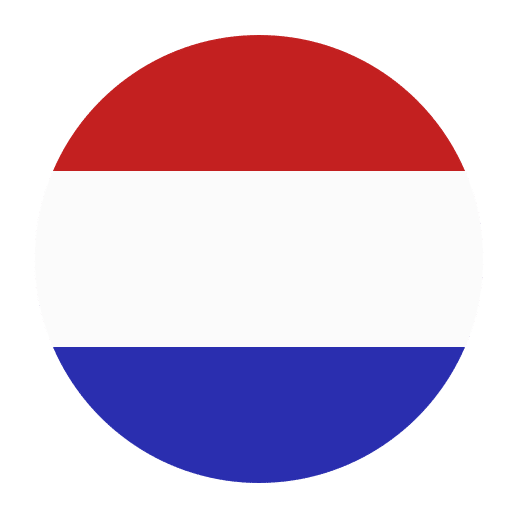Exploring Dutch Tourist Attractions Through Language
Learning a new language opens up a world of opportunities, not just in terms of communication but also in understanding culture, history, and daily life. One fascinating way to immerse yourself in a language is by exploring the tourist attractions of the country where that language is spoken. In this article, we’ll delve into some of the most iconic Dutch tourist attractions and explore the Dutch language in context. By the end, you’ll have a richer appreciation for the Netherlands and a more practical grasp of the Dutch language.
Amsterdam: The Heartbeat of the Netherlands
Amsterdam, the capital city of the Netherlands, is a vibrant, eclectic city known for its canals, museums, and historical landmarks. As you explore Amsterdam, you’ll encounter Dutch phrases and words that are essential for navigating the city.
Canals and Bridges
Amsterdam is often referred to as the “Venice of the North” due to its intricate canal system. The Dutch word for canal is “gracht,” and you’ll see this term frequently on maps and signs. The word “brug” means bridge, and you’ll find many of them as you wander through the city.
Museums and Art
The Rijksmuseum, Van Gogh Museum, and Anne Frank House are among the most visited museums in Amsterdam. Here are a few Dutch words and phrases related to museums and art:
– Museum (museum)
– Kunst (art)
– Schilderij (painting)
– Tentoonstelling (exhibition)
When visiting these museums, you’ll often see signs that say “ingang” (entrance) and “uitgang” (exit). Knowing these words can help you navigate more easily.
Practical Phrases for Amsterdam
– Waar is het Rijksmuseum? (Where is the Rijksmuseum?)
– Hoe laat sluit het museum? (What time does the museum close?)
– Hoeveel kost een kaartje? (How much is a ticket?)
Keukenhof: The Garden of Europe
Keukenhof, located in Lisse, is one of the world’s largest flower gardens and a must-visit for anyone interested in horticulture. Open only for a few weeks each spring, Keukenhof showcases millions of blooming tulips, daffodils, and hyacinths.
Flowers and Gardens
The Dutch are famous for their tulips, and the word for tulip is “tulp.” Other flower-related words you might encounter include:
– Bloem (flower)
– Tuin (garden)
– Bloembollen (flower bulbs)
Practical Phrases for Keukenhof
– Wanneer is Keukenhof open? (When is Keukenhof open?)
– Welke bloemen bloeien nu? (Which flowers are blooming now?)
– Waar kan ik bloembollen kopen? (Where can I buy flower bulbs?)
Rotterdam: A Modern Marvel
Rotterdam is known for its modern architecture, vibrant cultural scene, and bustling port. The city was heavily bombed during World War II and has since been rebuilt, resulting in a unique mix of old and new.
Architecture and Landmarks
Rotterdam is home to some of the most innovative architecture in the Netherlands. Key terms related to architecture include:
– Gebouw (building)
– Brug (bridge) – The Erasmus Bridge, known locally as “De Zwaan” (The Swan), is a notable landmark.
– Haven (port)
Practical Phrases for Rotterdam
– Hoe kom ik bij de Erasmusbrug? (How do I get to the Erasmus Bridge?)
– Wat is er te doen in de haven? (What is there to do at the port?)
– Welke gebouwen zijn het meest bekend? (Which buildings are the most famous?)
Utrecht: The Heart of Dutch History
Utrecht is one of the oldest cities in the Netherlands and is rich in history and culture. The city is known for its medieval old town, canals, and the Dom Tower.
Historical Sites
The Dom Tower is the tallest church tower in the Netherlands and a symbol of Utrecht. Key words and phrases related to historical sites include:
– Toren (tower)
– Kerk (church)
– Oud (old)
– Geschiedenis (history)
Practical Phrases for Utrecht
– Waar is de Domtoren? (Where is the Dom Tower?)
– Hoe oud is deze kerk? (How old is this church?)
– Wat zijn de openingstijden? (What are the opening hours?)
The Hague: The Political Hub
The Hague (Den Haag) is the seat of the Dutch government and the International Court of Justice. The city is also home to the royal family and numerous embassies.
Government and Politics
Key terms you might encounter when exploring The Hague’s political landscape include:
– Regering (government)
– Paleis (palace) – The Noordeinde Palace is the working palace of the Dutch king.
– Rechtbank (court)
Practical Phrases for The Hague
– Waar is het Vredespaleis? (Where is the Peace Palace?)
– Kan ik het paleis bezoeken? (Can I visit the palace?)
– Wanneer zijn de zittingen van het hof? (When are the court sessions?)
Dutch Cuisine: A Culinary Adventure
No trip to the Netherlands is complete without sampling its cuisine. From street food to fine dining, Dutch food offers something for everyone.
Traditional Dishes
Some traditional Dutch dishes include:
– Stroopwafel – A thin waffle cookie filled with caramel syrup.
– Bitterballen – Deep-fried meatballs, often served as a snack.
– Poffertjes – Small, fluffy pancakes typically served with powdered sugar and butter.
Practical Phrases for Dining
– Wat kunt u aanbevelen? (What can you recommend?)
– Heeft u een vegetarisch menu? (Do you have a vegetarian menu?)
– Mag ik de rekening, alstublieft? (May I have the bill, please?)
Language Tips for Travelers
When traveling in the Netherlands, it’s helpful to know a few basic Dutch phrases. While many Dutch people speak excellent English, using Dutch can enhance your experience and show respect for the local culture.
Greetings and Politeness
– Hallo (Hello)
– Goedemorgen (Good morning)
– Goedemiddag (Good afternoon)
– Goedenavond (Good evening)
– Dank u wel (Thank you very much)
– Alstublieft (Please)
Directions and Transportation
– Waar is… (Where is…)
– Hoe kom ik bij… (How do I get to…)
– Is dit de juiste weg naar… (Is this the right way to…)
– Hoe laat vertrekt de trein? (What time does the train leave?)
Conclusion
Exploring the Netherlands through its tourist attractions is a fantastic way to deepen your understanding of Dutch language and culture. Whether you’re wandering the canals of Amsterdam, marveling at the flowers in Keukenhof, or soaking in the modern architecture of Rotterdam, each experience offers a unique linguistic lesson.
By integrating language learning with travel, you not only enhance your vocabulary but also gain practical insights into how the language is used in everyday contexts. So pack your bags, grab a phrasebook, and embark on a linguistic adventure through the Netherlands. Happy travels and veel plezier (have fun)!

